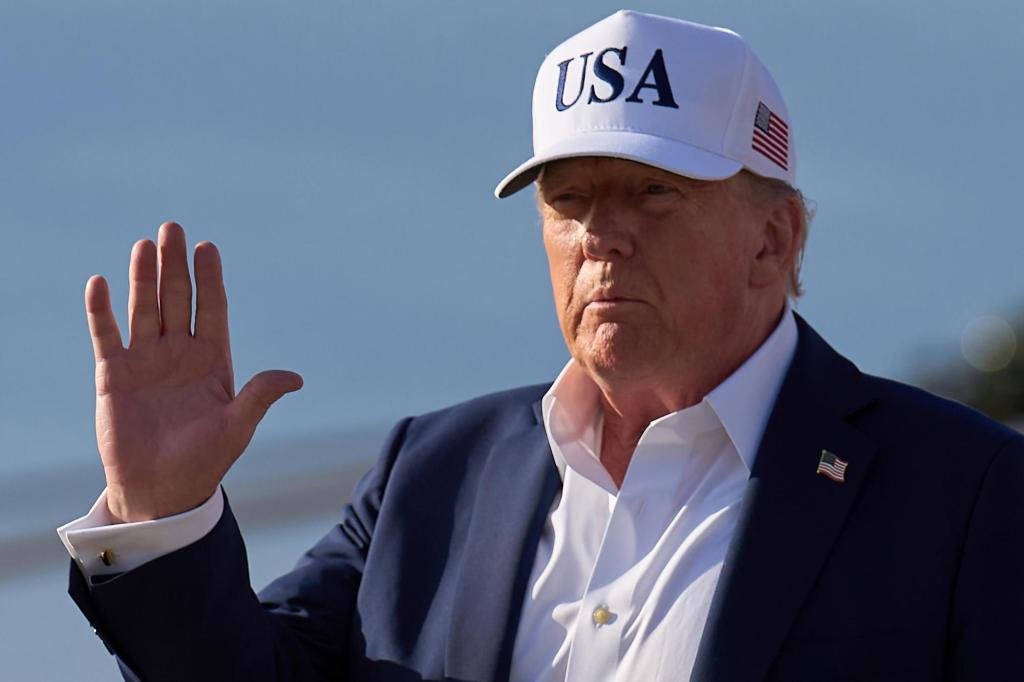Trump’s Trade Gambit: Tariffs, Tactics, and the Global Fallout
In a dramatic move echoing his administration’s unwavering stance on trade, President Donald Trump sent shockwaves through the global markets by issuing tariff letters to seven smaller U.S. trading partners. This unexpected announcement came with threats of further tariffs on major players, underscoring a volatile pivot in American trade policy that aims to wield economic pressure as a diplomatic tool.
The Shift in Trade Dynamics
On July 9, 2025, Trump’s letters landed in the official mailboxes of the Philippines, Brunei, Moldova, Algeria, Libya, Iraq, and Sri Lanka, marking a deliberate strategy against nations that pose no significant economic threat but are rather low-hanging fruit in the tariff debate. Analysts suggest this move is less about economic logic and more about Trump’s long-established belief that tariffs can somehow rejuvenate American manufacturing and create jobs.
“This is a calculated gamble,” says Dr. Emily Carter, an economic analyst at the Global Trade Institute. “Instead of addressing major economic rivals, Trump seems to be targeting easy victims to demonstrate his commitment to a nationalist economic agenda. This approach risks alienating allies and jeopardizing U.S. leadership in global trade.”
Economic Realities: The Impact of Tariffs
- The tariffs range from 20% to 35%, targeting imports from countries with minimal trade imbalances.
- The combined trade deficits with these nations amount to a mere rounding error in an economy surpassing $30 trillion.
- Economists warn that such tariffs, rather than protecting American industry, could exacerbate inflation and hinder economic growth.
Despite these warnings, the Trump administration remains steadfast, asserting that the import taxes will rectify trade imbalances and invigorate domestic manufacturing. According to Trump’s own letters, the tariffs are described as containing “common sense” reasoning tailored to rectify perceived injustices in trade.
“These tariffs are not just about economics; they’re symbolic of America’s assertiveness,” said diplomatic analyst David Malcolm. “Trump is using tariffs not only to chase trade deficits but to remind the world that America will flex its muscles as needed. It’s a classic case of gunboat diplomacy, albeit with a trade twist.”
International Reactions and Consequences
The letters have drawn mixed reactions from affected countries. For instance, Japan’s Prime Minister, Shigeru Ishiba, expressed concerns that the tariffs would destabilize domestic industries. “The Aug. 1 deadline may allow for discussions, but the implications for employment are severe,” he remarked during an emergency session with his cabinet.
Malaysia’s trade minister, Zafrul Aziz, responded to Trump’s announcement with defiance, stating, “We will not comply fully with U.S. demands. Some requests infringe upon our national sovereignty.” This sentiment reflects a broader unease among U.S. trading partners who fear the unpredictable nature of U.S. policies and their potential impact on global stability.
Strategic Use of Tariffs
Trump’s penchant for tariffs is not merely an economic experiment; it’s a tactic delicately intertwined with his diplomatic strategy. At a recent meeting with African leaders, Trump proclaimed trade as a bedrock of U.S. diplomacy, urging adversaries like India and Pakistan to resolve their differences through economic integration. Ironically, just days later, he imposed a hefty tariff on Serbia, seemingly undermining his own diplomatic narrative.
“Trade is a powerful weapon,” Trump asserted during the meeting. “If you don’t engage, you don’t get to trade. That’s how we maintain order.” Yet this rhetoric raises questions about the sustainability of leveraging trade as a political tool. A recent study by the Institute for Economic Strategy suggests that such tactics often lead to retaliatory measures, resulting in a net loss of jobs and increased prices for consumers.
The Broader Implications for Global Trade
As nations scramble to respond to Trump’s unilateral tariff actions, the implications for the global trading system are profound. Europe, a traditional ally, has been spared for now, but the threat of similar tariffs looms large on the horizon. Maros Sefcovic, the EU’s chief trade negotiator, hinted at continued negotiations, stating that “additional space allows for a satisfactory conclusion without exacerbating tensions.”
Simultaneously, Trump has painted a target on the backs of his largest trading partners, signaling a potential escalation in what could become a global trade war. “We should be wary of the long-term effects of these policies,” cautions Dr. Selena Hu, a trade economist at the World Policy Institute. “Retaliation is inevitable, and that could lead to an environment where global cooperation on trade is severely compromised.”
In summary, while Trump’s tariff letters may offer moments of political theater and momentary gains in his narrative of American diplomacy, the broader impact on international relationships and economic stability remains uncertain. As the world watches closely, one question lingers: Is the promise of prosperity through tariffs merely a mirage, or will it yield tangible benefits for the American populace?





